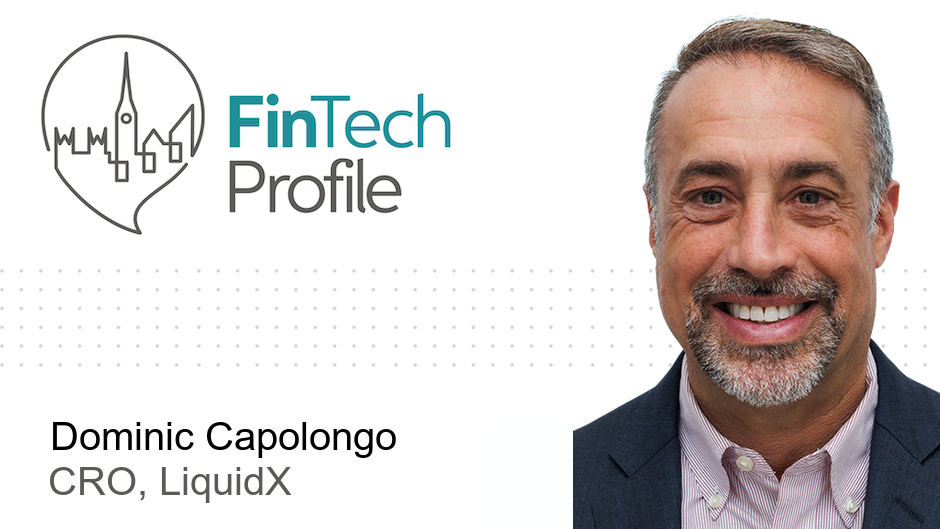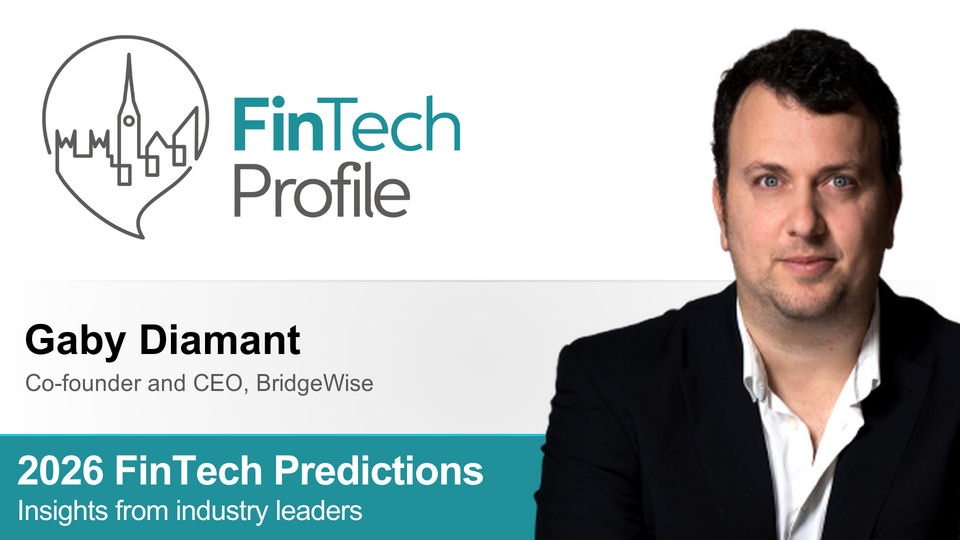Dominic Capolongo, Chief Revenue Officer of LiquidX

Today we're meeting Dominic Capolongo, CRO at LiquidX. They specialise in enabling finance professionals to transact more efficiently by digitising their trade finance and working capital management.
Over to you Dominic - my questions are in bold:
Who are you and what's your background?
In a nutshell, I'm an international trade and supply chain expert with an unconventional path spanning law, banking and fintech - building on a career that stretches over four decades.
When I first started out, I focused on admiralty and shipping law due to my interest in international trade; I saw it as the lifeblood of the global economy. That early focus placed the physical supply chain directly in my sights, and I later augmented that with expertise in the financial supply chain - especially as corporates began to recognise the importance of recapturing capital invested in the physical supply chain. I spearheaded a number of new ways for banks and finance companies to support businesses in unlocking that value.
I then moved to banking - retiring as a partner after a successful 12-year legal career that culminated in leading a structured finance team - with an invitation from a banking client to join them to lead the structured finance team there.
After spending 20 years running teams at various banks, helping to expand the scope of trade finance products and its access by a broader array of companies, I was invited to join one of the leading supply chain platforms as a senior officer and member of the exec committee. It was there that I led the successful expansion of the company's business to support more SMEs, a broader array of banks around the globe and the early entrants to trade finance by non-bank financial institutions (NBFIs).
Finally, drawing on my unique background - particularly my experience leading trade businesses within banks - I recognised a compelling need for purpose-built operating technology to streamline a wide range of manual processes that had remained unchanged throughout my 35+ year career in trade finance. Around that same time, I received an invitation to join LiquidX and lead the effort to strengthen its brand, focus its product suite and grow both its client roster and revenue.
What is your job title and what are your general responsibilities?
As LiquidX's CRO (Chief Revenue Officer), I'm responsible for all revenue generation processes in the organisation, as well as marketing and business development, commercial strategy, product development and international expansion.
Can you give us an overview of your business?
LiquidX takes its lead from our largest investor and strategic partner - Broadridge Financial Solutions, Inc. - and develops and licenses operating software for banks and NBFIs to manage their trade finance and working capital finance business.
Our systems help our clients with front, middle and back end systems. Specifically, our front end helps to run trade transactions anywhere around the globe supporting revenue growth. Our middle office systems, however, help track, manage and report data associated with the business - whether generated organically or inorganically - and uses proprietary AI and ML technology to standardise unstructured data flowing from the funder's clients, third party platforms and participation sellers.
Tell us how you are funded?
We're fully funded by our investors, the largest of which is Broadridge (NYSE: BR), a global leader in FinTech. The remainder of our investment comes from a mix of individual investors, family offices and our own management and employees.
What's the origin story? Why did you start the company? To solve what problems?
Our company started out about 10 years ago to offer a marketplace for banks and NBFIs to source corporate working capital finance opportunities, much like many in the trade fintech space. In 2021, we realised that while we were providing investment opportunities to our financial services clients and helping corporates more efficiently manage trade finance transactions, we were one of many providing these services.
We realised that the industry focus on corporates as the primary client group and making life easier for them was ignoring a much larger issue, which was the continued focus on manual work to support the trade business. This lack of technology focused on the processes banks and NBFIs use to manage their trade business was hampering growth, making the trade business more expensive to support and injecting potentially costly risk into the system. As such, that same year, we ended our focus on corporates and redirected our efforts to develop technology and outsourced services that support the operational needs of banks and NBFIs.
Who are your target customers? What's your revenue model?
Our target customers are banks and NBFIs, and we license our software and provide outsourced services through multiyear contracts. Since moving to our current business model, all new revenue origination has come from SaaS contract revenue.
If you had a magic wand, what one thing would you change in the banking and/or FinTech sector?
If I could change one thing, it would be the level of understanding within banks about the value of partnering with fintechs. For me, there's a lot of untapped potential in collaboration, and greater awareness of the benefits could unlock more long-term innovation across the sector.
What is your message for the larger players in the Financial Services marketplace?
My message to the larger players in financial services is simple: embrace third-party systems that are geared towards the industry's needs. Doing so will help standardise how transactions are done, make engagements between the funders more efficient and less complicated. More importantly, it drives greater throughput for all participants by expanding the base of clients who can be effectively served.
Where do you get your Financial Services/FinTech industry news from?
I read a variety of industry publications, general financial news sources, industry focused academic analyses and posts by industry participants. I also get a lot of insight from conversations with our clients, prospects and peers.
Can you list 3 people you rate from the FinTech and/or Financial Services sector that we should be following on LinkedIn, and why?
- Tim Gokey: As the CEO of Broadridge - our largest investor and strategic partner at LiquidX - Tim's perspective and focus on helping clients transform their businesses is always worth paying attention to.
- Mona Ghazzaoui: As Head of Receivable and Payable Financing at Credit Agricole, Mona's experience across ABN AMRO, RBS and MUFG means she really knows the nuts and bolts of supply chain finance. She gets how to make bank-fintech partnerships actually work and is definitely worth a follow.
- Mike Lonie: Mike is the former North American Trade Head at Mizuho Bank. Although he's recently retired, he has an incredible 50 years of banking experience under his belt, during which he's met, worked with and learned from a huge amount of people from around the world.
What FinTech services (and/or apps) do you personally use?
We use a variety of baseline technologies offered by providers such as Microsoft. In particular we use PowerBI for both internal analytics and client facing dashboards. It allows us to transform complex trade finance data like invoice flows, payment statuses, and portfolio risk metrics into clear and interactive visualizations.
What's the best new FinTech product or service you've seen recently?
I'd have to say our own Trade Finance Distribution platform, but for good reason. Unique in the functionality it offers, it's the only complete front-office solution designed specifically to originate and distribute trade finance transactions of any structure, across AR, payables and asset distribution. By automating previously manual, fragmented processes, it's helping banks, asset managers and corporates scale distribution without increasing headcount.
Finally, let's talk predictions. What trends do you think are going to define the next few years in the FinTech sector?
As is likely to be the case across most sectors, I think AI will be the most significant force shaping FinTech in the coming years. As adoption accelerates and AI is increasingly used in the development of new technologies, we're likely to see a drop in the cost of building tech - along with a dramatic increase in the speed at which it's developed.
Thank you very much, Dominic!
Read more about Dominic Capolongo on LinkedIn and find out more about LiquidX at liquidx.com.




